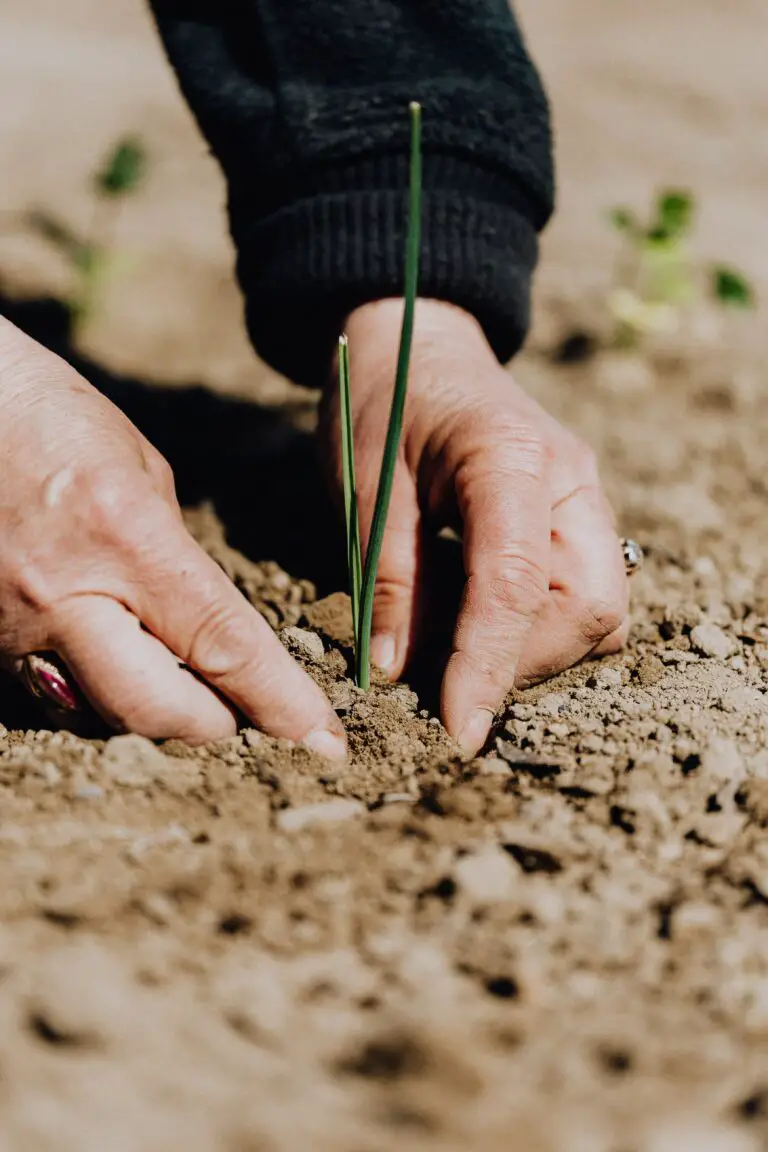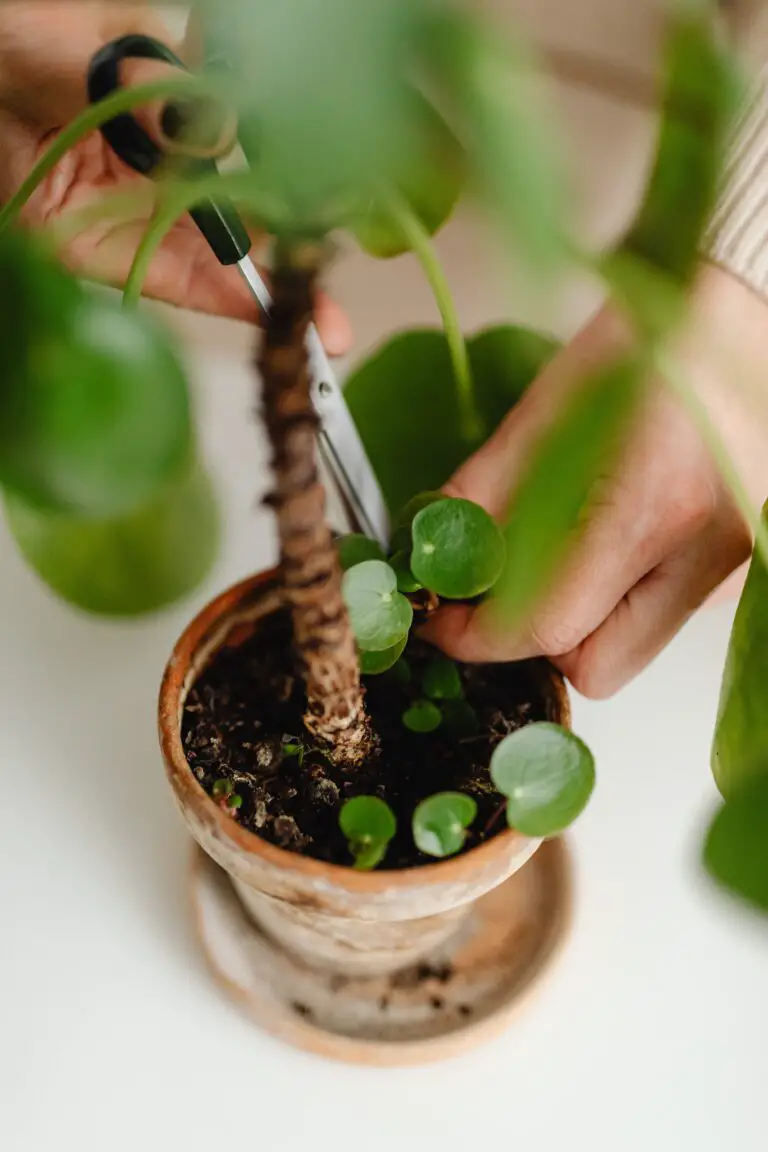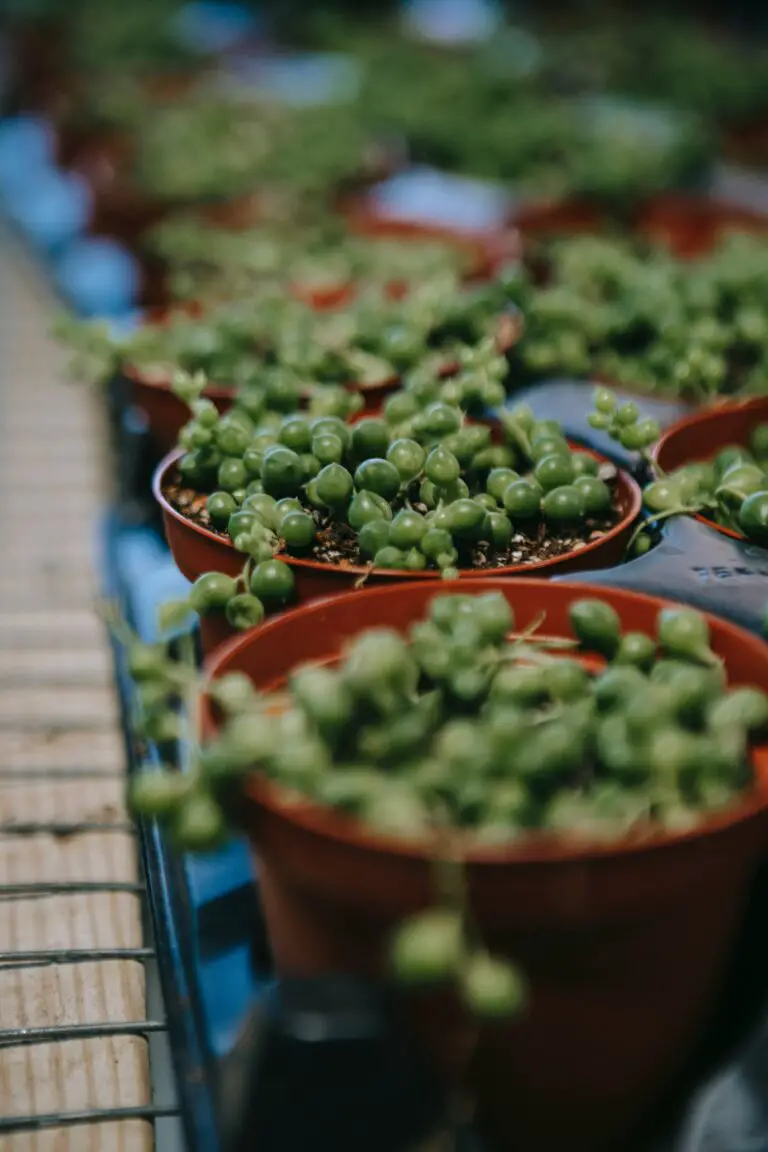“`html
Introduction to Senecio Crassissimus
Welcome to the captivating world of the Senecio crassissimus or, as some would say, the Vertical Leaf Senecio. Imagine a plant so resilient and charming that it becomes the darling of the succulent community. Picture its flat, fleshy, silver-green leaves stacked neatly against each other, painting a portrait of strength and beauty. This is the essence of the Senecio crassissimus, a succulent plant that captures hearts with its uniqueness.
Originating from the rocky slopes of Madagascar, Senecio crassissimus brings a touch of exotic flair to any space. Each leaf, edged with a hint of lavender blush, stands upright unfazed by the harsh climate of its native habitat. This structural marvel isn’t just a pretty sight; its thick leaves are a testament to its ability to thrive in arid conditions, storing moisture for the drier days ahead.
Incorporating this succulent into your life isn’t just a step towards botanical brilliance, it’s a lesson in resilience. As you learn to care for Senecio crassissimus, you’re reminded of the simplicity and efficiency with which nature operates. This plant asks for so little yet gives so much, teaching you that sometimes, less truly is more.
But don’t let its tough exterior fool you; beneath those robust leaves is a fragile beauty that blooms under the right conditions. When nurtured with love and care, it rewards with delicate yellow flowers that contrast vividly against its silver foliage. It’s a living piece of art, constantly evolving and ever so gracefully.
Whether perched on a sunny windowsill or nestled among other succulents in a rock garden, the Vertical Leaf Senecio is a showstopper. Have a look at our extensive succulent care guide for tips on creating the ideal environment for your green companion. Here, you’ll discover the importance of soil, light, and water balance, ensuring your Senecio crassissimus doesn’t just survive but thrives!
So dive in, explore, and let the secrets of the Senecio crassissimus reveal themselves to you. As each leaf unfurls, so too will your understanding and appreciation for this fascinating succulent.
“`
Optimal Conditions for Vertical Leaf Senecio Growth
Are you ready to skyrocket your Senecio crassissimus to lush, leafy glory? These unusual yet fascinating succulents, also known as Vertical Leaf Senecio, are more than just a pretty face in the world of flora. To unlock their full potential, giving them the right environmental cocktail is key. So, let’s dive into the exclusive secrets that will ensure your Vertical Leaf Senecio flourishes magnificently!
Let There Be Light!
Imagine your Senecio crassissimus lounging in a hammock of gentle, bright sunlight. That’s what it craves! Drenched in a spot where bright, indirect light floods it for hours, this marvelous plant thrives to its best form. Whether it’s near a sun-kissed window or basking under the glow of a grow light, ensuring it gets its daily dose of luminance is a non-negotiable for photosynthetic success.
Temperature: The Cozy Sweet Spot
Just like Goldilocks found her perfect bowl of porridge, Senecio crassissimus seeks its own comfort zone when it comes to temperature. Keeping the thermometer hovering between 65°F and 80°F hits the bullseye for these charmers. Remember, they’re not fans of the frost, so shield them from the chilly draft and Jack Frost’s embrace to prevent a cold-hearted disaster.
Humidity: Crisp Like Autumn Leaves
Step away from the mister! This succulent superstar relishes an environment that’s as crisp as a stroll through fall foliage — moderate to low humidity is where it’s at! Excess moisture in the air can be the kryptonite to its succulent powers, leading to a sad, soggy, and potentially moldy demise. Keep it dry, keep it sassy, and you’ll have a happy, robust Senecio crassissimus.
There you have it, the hush-hush yet straightforward lowdown on curating the ideal growing conditions for your Vertical Leaf Senecio. Pondering over more succulent whispers? Check out our guide to succulent care for expert insights. In the meantime, treat your eyes to an illustrative walkthrough on caring for these beauties:
Proper Watering Techniques for Senecio Crassissimus
Do you fancy keeping your Senecio Crassissimus perky and hydrated without getting its feet wetter than they should be? You’re not alone! This succulent, also known for its majestic upright leaves, can be quite the diva when it comes to its watering regime.
Let’s get to the root of it: Vertical Leaf Senecio is a plant that knows what it likes. Picture this – in their natural habitat, these drought-resistant troopers are accustomed to a climate that doesn’t mess around with a drizzly sky. They’re built to store water within their thick, fleshy leaves, ensuring they thrive even when the rain checks are few and far between.
When and How to Water Your Vertical Leaf Senecio
When it comes to caring for your succulents, timing is everything. To prevent a case of underwatering or the dreaded overwatering, stick to a watering schedule that mimics the episodic rainfall of their natural environment. Wait until the soil is completely dry and then give the plant a good soak. Think of it as a hearty meal followed by a period of fasting – this is the feast-and-famine method senecios have embraced over centuries.
If you’re new to succulent parenting or just looking for affirmation, dig your finger into the soil up to the second knuckle. Is it dry as a bone? If yes, bring on the waterworks. But here’s the kicker – don’t just sprinkle the surface. You need to ensure that the water reaches the roots where it actually counts.
Remember, it’s not just about frequency – the way you water your Senecio Crassissimus is key to avoiding soggy soil situations. Channel your inner rain god and opt for bottom watering. Simply place your potted friend in a shallow dish of water and let it gulp up moisture from the bottom up. This gives you a well-watered plant without the worry of wet leaves that could invite unwanted guests like rot and pests.
Consider the conditions in your home as well. A parched plant in a toasty room screams ‘more water, please!’ whereas its counterpart in a cooler, shadier spot might just say ‘I’m good, thanks!’ It’s about learning to interpret the subtle thirst signals these evergreen companions give off.
There’s a bit of an art to watering – it’s not just pour and ignore. Whether you’re nurturing your succulent indoors or outdoors, keep an eye on the forecast and your plant’s unique ambiance. With these guidelines, your Senecio Crassissimus will be more than just surviving; it’ll be audaciously thriving.
Soil and Fertilization Preferences
Unveiling the secrets to a flourishing Vertical Leaf Senecio, let’s dive deep into the world of Senecio crassissimus and its soil and fertilization whims! Imagine you’ve just brought home a stunning specimen, with its unique chalky-green leaves, edged with a vibrant purple. To ensure this sculptural beauty adds drama to your decor for the long haul, a little dirt detective work is in order.
What’s the ideal crime scene for this botanical gem? A soil mix that boasts excellent drainage yet can hold onto just the right amount of moisture—a paradox, indeed! But fret not, for the solution lies in a blend similar to that of a nimble acrobat, both porous and moisture-retentive, striking a perfect balance. Think of a mixture filled with organic goodness like peat moss, combined with sharp sand or perlite. It’s the kind of concoction that prevents root rot, a notorious villain in the plant world.
Espionage in the fertilization department unveils that less is more for the Senecio crassissimus. During the growing season, a diluted half-strength, balanced fertilizer is your ally, whispered sparingly every month. In the dormant winter, though, allow the soil to play its natural course without the extra boost, respecting the plant’s restful slumber.
For the curious minds seeking to craft their own bespoke soil ensemble, insights from this savvy guide on soil mixes might inspire the perfect blend for houseplant harmony. Just remember, the Vertical Leaf Senecio isn’t a fan of soggy feet, so let the soil dry between waterings, as if allowing the plant’s roots to sip a fine wine, basking in the intervals.
A tale from a verdant urban jungle serves as a testimony. Once, a green-thumbed enthusiast paired the Senecio’s favorite soil with a prudent fertilization scheme, and voilà! The plant grew with such fervor it was the talk of the town. Become the protagonist of your plant lore, and watch as your Senecio crassissimus transforms into a lush, vertical cascade of foliage, the envy of every plant enthusiast.
Behold the quintessential potting scene encapsulating the essence of a thriving Senecio crassissimus:

So, don your horticultural detective hat and embark on the gratifying quest of tailoring the ultimate soil mix that ushers in a new era of growth for your cherished Senecio. Let the secrets unfold and the roots take hold!
Propagating Your Senecio Crassissimus Successfully
Imagine this: you’ve just gotten your hands on a stunning Vertical Leaf Senecio, and it’s thriving. Its plump, purple-tinged leaves reach towards the sky as if in a jubilant dance. You love it so much, you decide it’s time to spread the joy. Propagation is your next adventure – and I’m here to guide you through it! Let’s dive into the world of Senecio crassissimus propagation, where each step is a gateway to new growth and botanical fulfillment.
Starting with Cuttings: The First Step to New Growth
The journey begins with a clean, sharp pair of scissors or a knife. Gently snip a healthy stem from your parent plant, making sure it includes several leaves. A good cutting measures about 3 to 5 inches – it’s not just a number, it’s the golden ticket to propagation success! Submerge the cut end in water immediately to avoid air embolisms, because just like us, plants need unobstructed pathways to flourish.
Here’s a tip from a fellow green thumb: before planting your cutting, let it callus over for a day or two. This simple pause reduces the risk of rot and kickstarts a resilient future for your little green buddy.

Rooting with Ease: Patience Bears Fruit… or Leaves!
Now, take your callused cutting and nestle it into a pot filled with well-draining soil. The right soil mix makes all the difference: think lightweight and airy, like a cloud for roots. Water it sparingly – your cutting is not a fan of soggy feet. Then the wait begins. In a few weeks, with patience and a sprinkle of care, roots will emerge, and your cutting will officially join the plant parent club!
Leaf Propagation: A Small Piece, A Big Potential
Perhaps you’d prefer to start even smaller? Leaf propagation is like a magic trick where you watch a single leaf transform into a full-blown plant. Gently twist off a healthy leaf from the stem; it’s important to get a clean break. Place your leaf on top of the same type of soil used for stem cuttings, and mist it lightly. Over time – with the suspense of a thriller novel – tiny roots and a new plant will appear from the base of the leaf.
The reward of propagating your Senecio crassissimus is not just in the end result, but in the process itself. By understanding the needs of your cuttings and providing the right environment, you’re unlocking the secrets to thriving plants. Each step is a brushstroke on the canvas of growth, and you, the artist, are creating masterpieces of greenery. Keep an analytical eye on moisture levels, light conditions, and temperature – these details, however small, are the building blocks of successful propagation. It’s a beautiful journey, and you’re well on your way!
Pest Management and Disease Prevention
Imagine you’re walking through your indoor garden, admiring the bold textures and vivid colors of your beloved Senecio crassissimus, when suddenly you spot it: a tiny pest making itself at home on your Vertical Leaf Senecio. It’s a common scenario that can quickly become a gardener’s nightmare. But don’t worry, with the right knowledge and tactics, you can outsmart these pesky intruders and keep your plants thriving!
Identifying the Enemy
First things first, you’ve got to know what you’re dealing with. Mealybugs, spider mites, and aphids are the usual suspects when it comes to Senecio crassissimus. Mealybugs look like little cotton swabs; spider mites are tiny and can create webbing; aphids are usually green, black, or white and love to suck on plant sap. Once spotted, it’s action time!
Launch a Counter-Attack on Pests
Imagine a plant infestation as a covert mission where you’re the hero. Your mission is to eliminate the pests with precision and care. A soft cloth dipped in rubbing alcohol can wipe out mealybugs. For spider mites and aphids, neem oil or insecticidal soap can be your trusted allies. Spray thoroughly and remember—consistency is key. Repeated applications every few days can overwhelm and defeat the invaders.
Real-Life Example: Jill, a fellow Vertical Leaf Senecio enthusiast, once noticed some leaves on her plant turning yellow. She took a closer look and—lo and behold—spider mites. She didn’t panic. Instead, she reached for her neem oil spray bottle and gave her plant a good shower every three days. Within two weeks, her Senecio came back stronger than ever, with no sign of the mites.
Avoiding the Outbreak
The best defense is a good offense, and that’s particularly true for plant care. Keeping a clean environment for your plants is like setting up a no-pest zone. Remove any fallen debris around the pot, and isolate new plants before introducing them to your collection. Make it a habit to inspect your plants regularly so you can spot any problems early.
But let’s face it, sometimes even with the best preventive measures, pests slip through. Stay vigilant, and if you do find an issue, tackle it head-on, just like you would in any epic battle between good and evil.
If you’re more of a visual learner, this next resource is for you. Let’s take a pause and watch a video that offers an insider’s look at how to keep your Senecio crassissimus pest-free:
In conclusion, managing pests and preventing diseases in your Senecio crassissimus is all about being attentive and ready to act. By observing the health of your plants and using the right tools, your Vertical Leaf Senecio will not only survive but thrive, providing you with the lush, architectural beauty that only this unique succulent can bring.
Designing with Senecio Crassissimus: Aesthetic Uses in Landscaping and Indoors
Imagine stepping into a space where the cool, blue-green hues of Senecio crassissimus catch your eye, its plump leaves cascading like jewels. This hardy yet striking succulent, also known as Vertical Leaf Senecio, brings a sculptural quality to any landscape or interior, acting as a dynamic visual anchor. Let’s dive into the creative ways you can integrate this unique plant into your life.

Outdoor Charm: Elevating Garden Design
Within your garden, Senecio crassissimus isn’t just another plant; it’s a statement. Its thick, vertical foliage dances in the breeze, providing a contrast against softer, flowing plants. Consider framing a pathway with these vertical succulents, leading visitors through a green gallery. Nestled among rockeries or perched atop retaining walls, they emulate a natural outcrop, bringing a piece of desert majesty to your very doorstep.
Indoor Elegance: Contemporary Flair in Home Decor
Indoors, Senecio crassissimus adapts to the role of a modern art piece. Picture a sleek, minimalist living room where the bold vertical lines of the succulent pair with geometric furniture, its cooling palette complementing warmer wood tones. In the subdued light near a north-facing window, it thrives with little fuss, a living sculpture that cleans the air and captivates guests.
Don’t shy away from playful arrangements—create a “succulent bookshelf,” where each shelf features a pot with Senecio crassissimus, arrayed with aesthetic intention, their subtle variegation a whisper of quiet beauty in a room filled with knowledge and stories.
Multipurpose Beauty: Functional and Ornamental
Senecio crassissimus effortlessly bridges the gap between functional plant and ornamental spectacle. In urban settings where outdoor space is at a premium, a balcony garden of these vertical wonders in terracotta pots exudes a chic, urban jungle vibe. They become more than plants; they’re integral design elements that reshape perceptions of space, offering respite from the concrete surrounds.
Embracing Senecio crassissimus in design is to invite a slice of the exotic into everyday spaces. From their ability to stand alone as avant-garde accents to their power to transform a bland balcony into a lush retreat, these succulents offer a versatile palette for the creative soul.
Winter Care: Ensuring Your Senecio Survives the Cold Season
Picture this: As the first frosts of winter whisper across the landscape, your Senecio crassissimus, or Vertical Leaf Senecio, stands bold and bright against the chill. This succulent friend, known for its striking blue-green leaves edged in purple, is not just a plant, but a pulchritudinous pièce de résistance in your garden’s winter tableau. But to keep it that way, certain steps should be embraced to ensure it weathers the winter wonderfully.
Firstly, understanding the winter hardiness of Senecio crassissimus is paramount. Hailing from the warm climes of Madagascar, it’s no polar bear. Although it can withstand brief cold snaps, this succulent prefers temperatures above freezing. A tip to provide a haven for your succulent is to replicate its native habitat’s conditions. If you’re in a frost-prone area, consider moving potted specimens indoors before Jack Frost pays a visit. An unheated greenhouse or an indoor south-facing window sill can serve as a splendid winter sanctuary.
Local lore from seasoned gardeners speaks of Senecio’s surprising resilience. Yet, they caution, prolonged exposure to cold and wet conditions is a definite no-no. When the mercury dips, water becomes the foe. The key to a happy Senecio in colder months is dry feet. Lessen your watering schedule, allowing the soil to dry out well between waterings. Slumbering in its pot, this delightful succulent conserves energy, making excessive moisture unnecessary and unwelcome, as it can lead to root rot.
An additional trick to triumph over the frost is to provide a protective mulch blanket around your Senecio crassissimus. A layer of straw or leaf mulch can offer a buffer against the biting cold, much like a botanical comforter. This, paired with well-draining soil, can be a lifeline when the weather outside is frightful. Apply the mulch in the fall, and remember to clear it away as spring approaches to avoid any unwelcome dampness as the temperatures rise.
Should a surprise frost hit, and you find your Senecio outdoors, an emergency cover-up at night with a frost cloth can be a plant lifesaver. Just be sure to remove it during the day to allow for light and air circulation. These unsung heroes of the horticultural world, frost cloths, can be the difference between your Senecio flourishing or floundering when Jack Frost gets overzealous.
For a visual guide on protecting your Senecio crassissimus during the colder months, let’s take a peek at a gardener’s experience shared in the following video:
Remember, with a little knowledge and care, the winter season can be a time of rest and rejuvenation for your Senecio rather than a period of peril. So, bundle up your botanical buddy, and come spring, you’ll be rewarded with a thriving, vivacious Vertical Leaf Senecio ready to grow and glow for another season.
FAQs on Senecio Crassissimus Care and Maintenance
So, you got yourself a Senecio crassissimus, also known as the Vertical Leaf Senecio, and now you’re wondering how to make it flourish in your living space? Well, you’re in luck! Let’s dive into some of the most common questions newbie and seasoned plant enthusiasts alike might have when it comes to Senecio crassissimus care. Trust me, with a little know-how, your succulent buddy will thrive!
Is my Senecio crassissimus getting too much sun?
Just like your friend who turns lobster red at the mere mention of a sunny day, your Senecio crassissimus can also get too much of a good thing. It’s a succulent that loves light but prefers not to bake in the hot afternoon sun. A sunburnt succulent is quite a sight – think faded colors and limp leaves! Aim for a spot that gets a gentle mix of sun and shade, like an east-facing window where it can bask in the soft morning light.
How often should I water my Vertical Leaf Senecio?
Watering succulents is like seasoning food – it’s all about balance! Too little, and your Vertical Leaf Senecio will start to look like a dehydrated hiker, too much, and it’ll be swimming in soggy soil. The magic trick? Let the soil dry out completely between watering. Stick your finger in the soil; if it’s dry a couple of inches down, it’s time for a drink. That’s usually around every 10-14 days, but always check first – it’s not thirsty just because you are!
What are the signs my Senecio crassissimus needs repotting?
Ah, the classic “Is it too snug in here?” dilemma. If your Senecio crassissimus starts pushing its boundaries, it’s probably time to upgrade its living quarters. When you notice roots peeking out from the drainage holes or the plant looks like it’s outgrowing its pot, give it a new home with a bit more space. Think of it as plant adulting – eventually, it needs to move out of its tiny apartment.
Remember, every Senecio crassissimus has its own personality, and like all good plant-parent relationships, it’s all about learning and growing together. Pay attention, adjust as you go, and soon you and your succulent will be in sync, enjoying the good life side by side!


